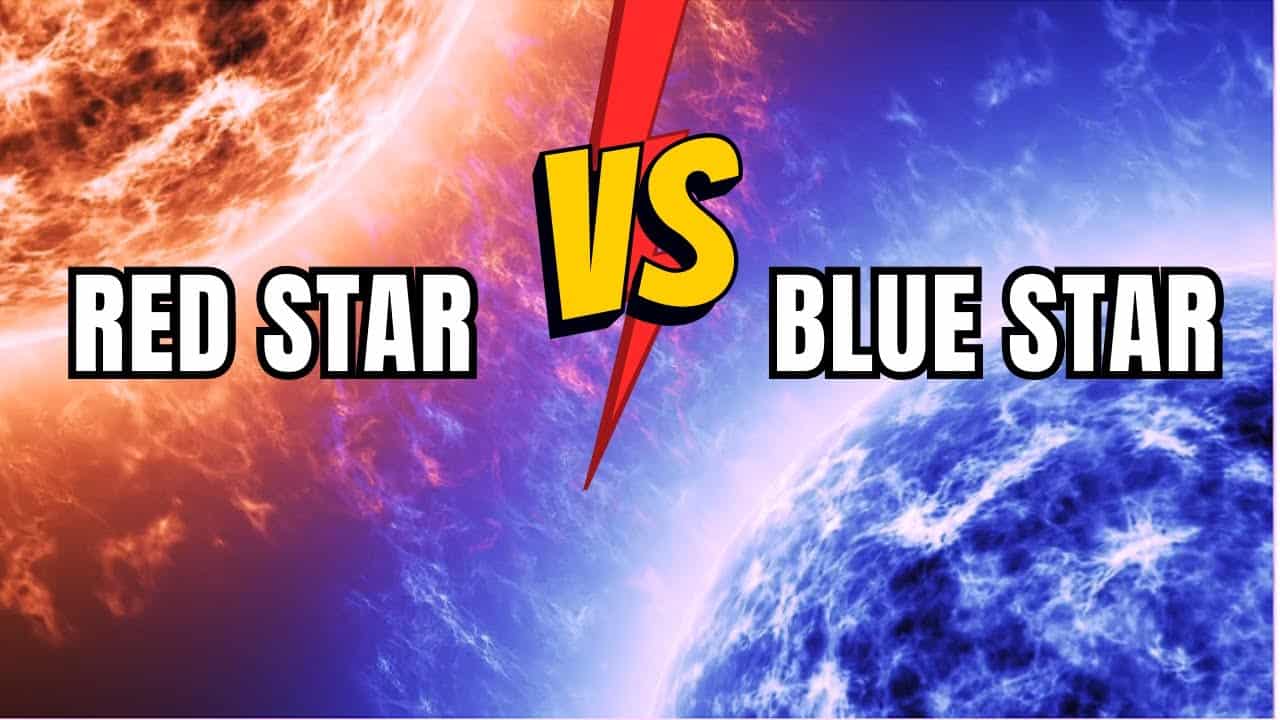Red giants are older, cooler stars, while blue giants are hotter, younger stars in the universe. Red giants have expanded and cooled, creating a reddish hue, while blue giants shine brightly due to their high temperatures and energy output.
The difference in size and temperature between these two types of stars leads to contrasting characteristics and life cycles. Understanding the distinctions between red and blue giants can offer valuable insights into stellar evolution and the vast complexity of the universe.
Red giants are fascinating astronomical objects known for their immense size and cooler temperatures, while blue giants stand out with their intense heat and luminosity. By exploring the unique features of red and blue giants, scientists gain crucial knowledge about the lifecycle of stars and the forces shaping our universe. We delve into the intriguing differences between these stellar giants, providing a comprehensive overview of their characteristics and significance in the cosmos.

Credit: www.amazon.com
Characteristics
Red Giant and Blue Giant stars differ in size, temperature, and lifespan. Red Giants are cooler, larger, and older, while Blue Giants are hotter, smaller, and relatively younger. Their distinct characteristics impact their brightness and evolution in the vast universe.
Red giants and blue giants are two types of stars with distinct characteristics that set them apart. Let’s explore their unique attributes in terms of Size and Mass, Temperature, Color, and Luminosity.Size And Mass
Red giants are typically larger and have lower mass compared to blue giants. Red giants can be hundreds of times larger than our sun, while blue giants are massive stars with higher mass.Temperature
Red giants have cooler surface temperatures, emitting a reddish glow. In contrast, blue giants are extremely hot, with surface temperatures reaching tens of thousands of degrees Kelvin.Color
The color of a star is indicative of its temperature. Red giants appear red due to their lower temperatures, while blue giants shine blue because of their extremely high surface temperatures.Luminosity
Red giants have lower luminosities compared to blue giants. Blue giants are incredibly bright stars, emitting vast amounts of energy and light into space. Each type of star has its own unique characteristics that contribute to its appearance and behavior in the vast expanse of the universe.Life Cycle
The life cycle of stars like Red Giants and Blue Giants involves several stages, each unique in its formation and evolution.
Formation
Stars begin as clouds of gas and dust contracting under gravity until nuclear fusion ignites, kicking off their life cycle.
Main Sequence
- Stars stabilize into the main sequence phase, where they fuse hydrogen into helium, producing energy and light.
- This phase can last billions of years as the star maintains equilibrium between inward gravity and outward pressure.
Evolution To Red/blue Giant
- As the hydrogen fuel depletes, the star undergoes changes, expanding and cooling to become a Red Giant or contracting and heating to form a Blue Giant.
- Red Giants are large, cool stars while Blue Giants are hot, massive stars with short lifespans.
Comparing Sizes
When it comes to comparing the sizes of red giants and blue giants, there is a stark contrast. Both types of stars are giant stars in the later stages of their life cycle but differ in their key characteristics. Let’s delve into the sizes of red giants and blue giants and explore what sets them apart.
Red Giants
Red giants are massive stars that have expanded and cooled down after exhausting their core hydrogen fuel. These stars can be tens or even hundreds of times bigger than our sun. One notable example of a red giant is Arcturus, which is around 26 times bigger than the sun. Red giants have a characteristic reddish appearance due to their relatively low surface temperatures.
Blue Giants
On the other hand, blue giants are also massive stars in the later stages of their evolution. Unlike red giants, blue giants maintain extremely high temperatures and have a blueish-white appearance. These stars are incredibly luminous and emit an immense amount of energy. While blue giants are smaller in size compared to red giants, they are still significantly larger than our sun. Examples of blue giants include Rigel and Spica, which are approximately 78 and 11 times larger than the sun, respectively.
Comparison
| Red Giants | Blue Giants |
|---|---|
| Large size | Smaller in size compared to red giants |
| Reddish appearance due to low surface temperatures | Blueish-white appearance due to extremely high temperatures |
| Examples: Arcturus | Examples: Rigel, Spica |
Now that we have compared the sizes and key characteristics of red and blue giants, it’s clear that these giant stars differ significantly in their appearance and size. While red giants are much larger and exhibit a reddish hue, blue giants are smaller but emit an intense blueish-white light. Each type of giant star has its own unique qualities and plays a vital role in the vast tapestry of the universe.

Credit: easy-peasy.ai
Comparing Temperatures
When comparing red giants and blue giants, one of the key aspects to consider is their temperatures. Understanding the differences in temperature between these massive stars can provide insights into their evolution and characteristics.
Red Giants
Red giants are massive stars in the later stage of their evolution. These stars have surface temperatures that can range from approximately 3,000 to 4,000 degrees Celsius. Despite their lower temperatures compared to other types of stars, red giants are incredibly luminous due to their large size and high energy output.
Blue Giants
On the other hand, blue giants are known for their extremely high temperatures. These massive stars can have surface temperatures that exceed 20,000 degrees Celsius. The intense heat generated by blue giants contributes to their brilliant blue-white appearance and immense energy emissions, making them some of the most visually striking celestial bodies.
Comparing Colors
`When it comes to comparing colors in the vast expanse of the universe, red giants and blue giants stand out prominently. These colossal stars exhibit their unique characteristics, influencing their colors and behavior. Let’s delve into the comparison of these two stellar wonders, exploring the distinctive attributes and magnificence each offers.`
`red Giants`
`Red giants are massive and aging stars that emit a reddish hue, bringing a warm and captivating glow to the cosmos. These celestial giants form when a star expands during its red giant phase, signaling the later stages of its life cycle. The surface temperature of red giants is relatively low, contributing to their distinct color that highlights their advanced age and evolution.`
`blue Giants`
`On the other hand, blue giants boast an entirely different allure within the universe. These massive stars are markedly hotter and emit a brilliant blue color, illuminating the cosmic canvas in a celestial display of grandeur. Blue giants signify the youthful vigor and intense energy characteristic of stars in their prime. Their scorching surface temperatures result in the dazzling blue glow that sets them apart amidst the stellar congregation.`
`In the grand tapestry of the cosmos, the stark contrast between the resplendent red giants and the vibrant blue giants evokes awe and wonder. While red giants signify the culmination of stellar evolution, blue giants exude the fiery vitality of their youth. Each of these stellar wonders paints a captivating portrait in the cosmic gallery, beckoning us to contemplate the magnificent interplay of color and cosmic forces.`
Comparing Luminosities
When exploring the vastness of space, we often come across celestial objects that captivate our imagination. Two such stellar wonders are the Red Giants and the Blue Giants. These colossal stars shine brightly in the night sky, but which one has a greater luminosity? Let’s examine the luminosities of Red Giants and Blue Giants in more detail.
Red Giants
Red Giants, as their name suggests, are massive stars that have evolved and expanded over time. These behemoths are characterized by their cool surface temperatures and immense sizes. Due to their sheer mass, Red Giants emit an extraordinary amount of energy, causing them to shine brilliantly in the galactic tapestry.
So, how luminous are Red Giants? On average, a Red Giant can have a luminosity that ranges from 10 to 1,000 times brighter than our Sun. Just imagine the sheer magnitude of light radiating from these majestic celestial bodies, making them easily visible even from faraway corners of the universe.
Blue Giants
As we turn our attention to the Blue Giants, we encounter another spectacular class of stars. Blue Giants are famous for their intense heat and bluish-white glow, which sets them apart from their red counterparts. These massive stars are young and vibrant, radiating immense energy that casts a dazzling spectacle across the cosmic expanse.
Now, let’s dive into their luminosity. Blue Giants are recognized for their exceptional brightness, with luminosities that can reach staggering levels. On average, a Blue Giant can shine around 1,000 to 50,000 times brighter than our Sun, exuding a luminous radiance that easily outshines many other stars in their vicinity.
Comparing Luminosities – A Table
| Stars | Average Luminosity (in comparison to the Sun) |
|---|---|
| Red Giants | 10 to 1,000 times brighter |
| Blue Giants | 1,000 to 50,000 times brighter |
The table above provides a summarized comparison of the luminosities of Red Giants and Blue Giants. It highlights the significant difference between the two, with Blue Giants generally surpassing Red Giants in terms of brightness.
In conclusion, both Red Giants and Blue Giants exhibit jaw-dropping luminosities that leave stargazers in awe. However, it is the Blue Giants that take the crown when it comes to sheer brilliance, outshining their red counterparts by a considerable margin. Whether it’s the fiery glow of a Blue Giant or the magnificent radiance of a Red Giant, these celestial giants continue to amaze and inspire us with their captivating luminosities.

Credit: www.youtube.com
Frequently Asked Questions On Red Giant Vs Blue Giant
What Are Red Giant And Blue Giant Stars?
Red Giant and Blue Giant stars are two different stages in the life cycle of a star.
How Do Red Giant And Blue Giant Stars Differ?
Red Giants are older, cooler stars, while Blue Giants are younger, hotter stars.
What Is The Size Comparison Between Red Giant And Blue Giant Stars?
Red Giants are typically larger in size compared to Blue Giants, due to their advanced stage in the star’s life cycle.
Conclusion
To sum up, the comparison between Red Giant and Blue Giant stars brings us closer to understanding the fascinating realm of celestial bodies. While Red Giants are massive and cooler, Blue Giants are hotter and much more luminous. Both types play a crucial role in the universe’s life cycle and offer unique insights into stellar evolution.
Exploring and appreciating their distinct characteristics illuminates the wonders of our vast cosmos. Keep gazing up at the night sky; it holds countless secrets waiting to be discovered.



